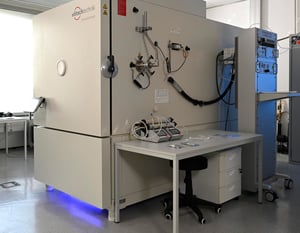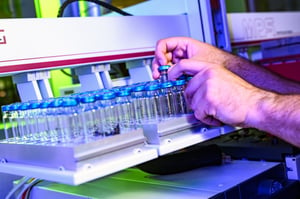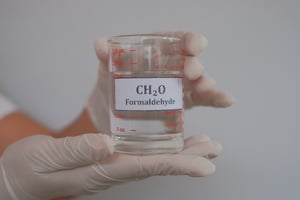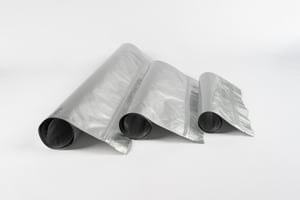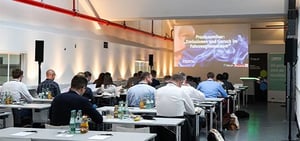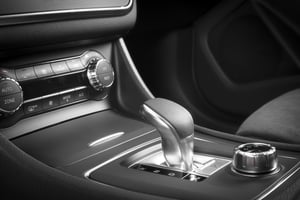
Fogging
Determination of the fogging behavior of materials used in vehicle interiors
FOGGING TEST IN THE
AUTOMOBILE INTERIOR
ENSURING THE DURABILITY OF VEHICLES
Testing the corrosionresistance of materials in outdoor exposure is one of the key challenges in ensuring the longevity and safety of vehicles .
Corrosion can not only affect the structural integrity of vehicle components, but also jeopardize the safety of occupants and shorten the service life of vehicles.
The evaluation of corrosion tests comprises several steps:
- Visual inspection: samples are examined for signs of corrosion, such as rust or color changes.
- Measurement of corrosion rates: This is done by weight measurements or with special equipment that quantifies the depth of corrosion.
- Microscopic analyses: Electron microscopes are used to examine the corrosion products and material structures in detail.

Specific norms and standards:
Fogging test methods
- DIN 75201-A (reflectrometric)
- DIN 75201-B (gravimetric)
- PV 3015 (Volkswagen)
- GMW 3235-A (General Motors Worldwide)
- PSA D45 1727
- and much more.
Are you looking for an exam? Standard? Specifications?
Accredited & certified tests
CONTACT OUR EXPERTS
Description. Lorem ipsum dolor sit amet, consetetur sadipscing elitr, sed diam nonumy eirmod tempor invidunt ut labore et
- Tab Title






- Meaning of corrosion test
- Outdoor weathering test
- Relevant standards
- Material selection
Meaning of corrosion test
Corrosion can significantly shorten the service life of vehicles and endanger the safety of passengers. Therefore, the investigation of corrosion susceptibility is an important part of material selection and development. Compliance with specific standards, such as ISO 12944 (protective measures against corrosion), VDA 621-415 (corrosion change test) and ASTM B117 (salt spray test), is essential.
Outdoor weathering test
Relevant standards
Compliance with the specific OEM standards is crucial for the validation of the test results:
- ISO 12944: This standard specifies requirements for the corrosion protection of steel structures and is relevant for the selection of materials and coatings.
- VDA 621-415: This standard describes the test methods for determining the corrosion resistance of materials in salt spray.
- ASTM B117: This standard method for salt spray testing is often used to evaluate the corrosion resistance of coated and uncoated materials.
Material selection
The findings from our corrosion tests are crucial for the selection of materials in vehicle construction. Materials that prove to be susceptible to corrosion can be replaced by more resistant alternatives or protected by suitable coatings. These decisions are based on the results we achieve in accordance with the applicable OEM standards.
Frequently asked questions about the fogging test
The sample quantities required for a fogging test depend on the standard and the test method used. Here are the general guidelines:
1. standard DIN 75201 (type A and type B)
-
Type A (glass plate method):
A sample quantity of 10 cm² is typically required. The sample is placed on a heated plate in a sealed chamber and the volatiles released condense on a glass plate above. -
Type B (aluminum foil method):
Similar to type A, a sample volume of approximately 10 cm² is used. However, the volatile substances condense on a cooled aluminum foil.
2. standard ISO 6452 (international standard)
- Sample quantity:
Again, a sample size of about 10 cm² is typically required to evaluate the amount of volatiles released at elevated temperature.
3. other specific requirements
Depending on the specific requirements of the customer or OEM standards, sample quantities may vary. It is important to check the respective standards or test requirements carefully.
Method A - Reflectometric method:
- Principle: This method measures the change in reflectivity on a glass plate on which volatile components from the material sample are deposited.
- Procedure: A material sample is heated in a beaker while a glass plate above it is cooled to 21°C. The temperature difference causes the volatile components to condense on the glass plate. The reflectance index of the fogged glass plate is then measured to determine the amount of condensed material.
- Application: This method is particularly suitable for materials for which an exact determination of the optical fog effect is required.
Method B - Gravimetric method:
- Principle: This method measures the weight of condensed volatiles on an aluminum foil.
- Procedure: The material sample is heated in a beaker while an aluminum foil disc is cooled to 21°C. After 16 hours, the amount of condensed material on the foil is weighed.
- Application: This method is ideal for an accurate quantitative determination of the amount of condensed volatiles.
EMISSIONS & ODOR
Formaldehyd in Fahrzeugen: Herausforderungen für die Automobilindustrie
Read moreStellantis: Freigabe für Emissionsprüfungen erfolgreich (VIAQ)
Read moreVDA 277 vs. VDA 278: Was ist der Unterschied?
Read moreGeruchsunterschiede bei Polypropylen: Die Rolle von Faserverstärkung und Verarbeitungsparametern
Read moreWarum sind die Einheiten der Ergebnisse von Prüfungen der Werkstoffemissionen eigentlich so unterschiedlich?
Read moreGrenzwerte für Formaldehyd und Formaldehydabspaltern in Fahrzeugen
Read moreFREQUENTLY ASKED QUESTIONS ABOUT CORROSION RESISTANCE
Corrosion resistance tests are carried out to assess specific material properties with regard to environmental influences.
We are proficient in
various standard test methods such as salt spray tests, harmful gas or condensation water tests. The effects of temperature and humidity are examined in our climate chambers.
- ISO 12944: This standard specifies requirements for the corrosion protection of steel structures and is relevant for the selection of materials and coatings.
- VDA 621-415: This standard describes the test methods for determining the corrosion resistance of materials in salt spray.
- ASTM B117: This standard method for salt spray testing is often used to evaluate the corrosion resistance of coated and uncoated materials.


